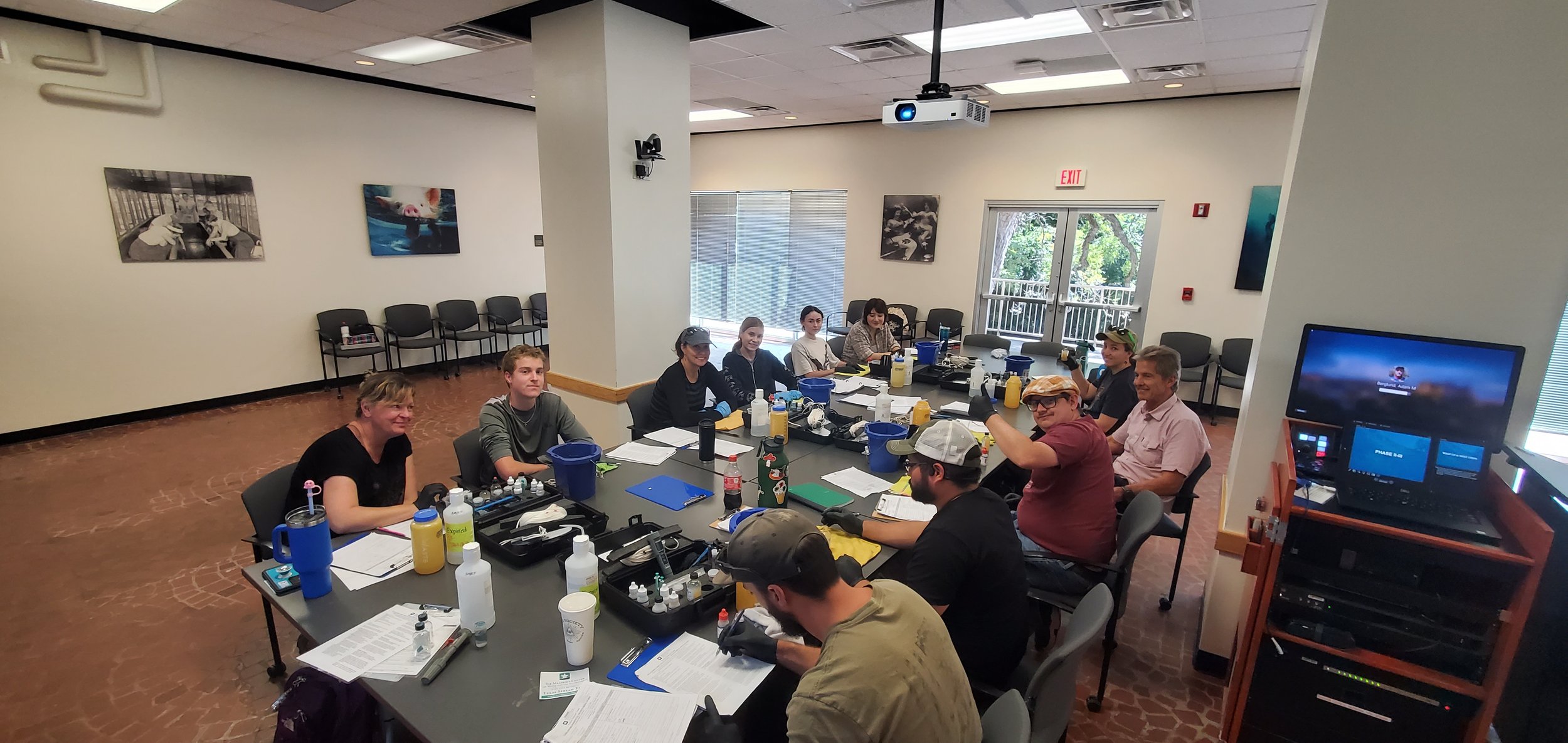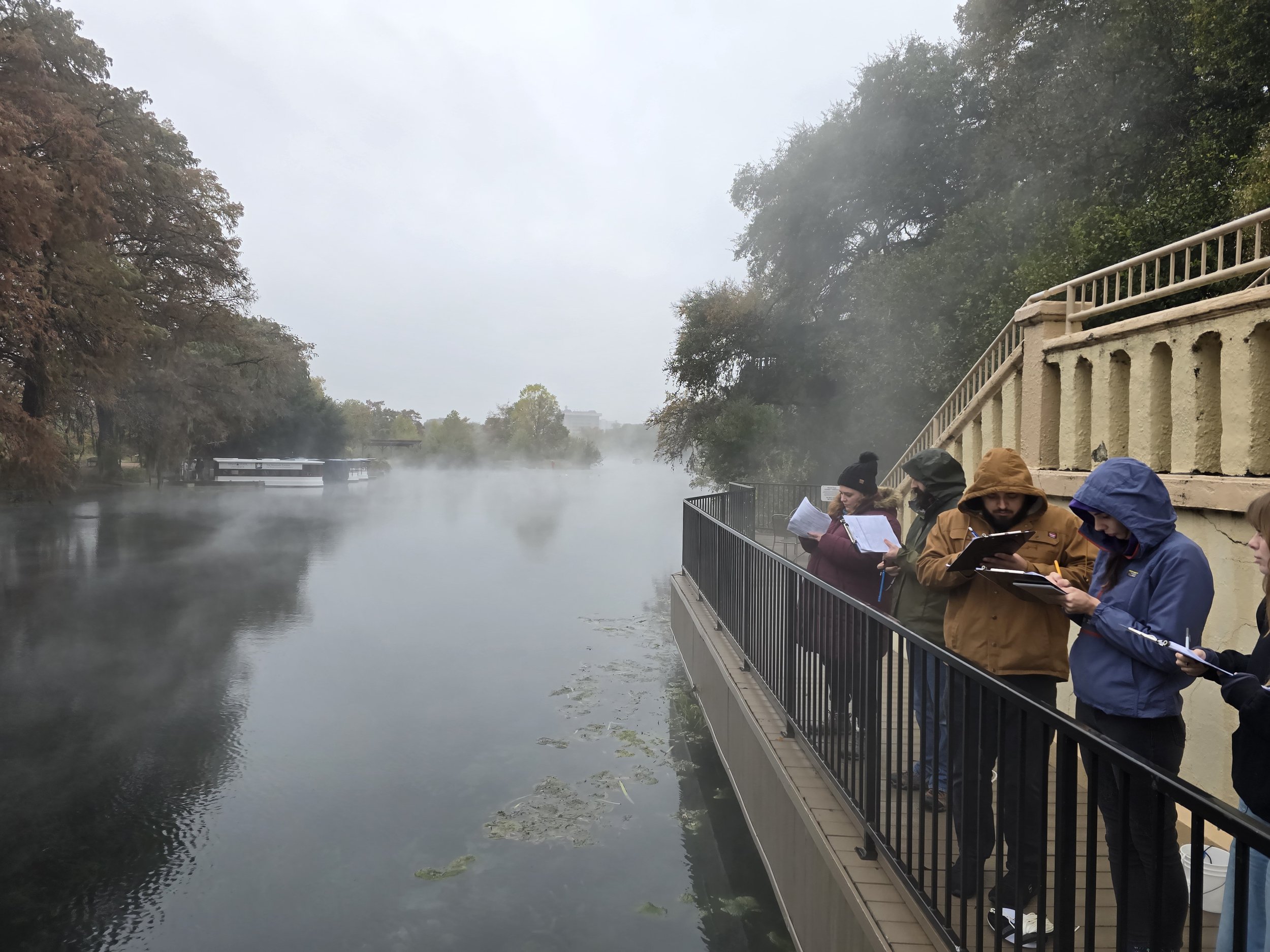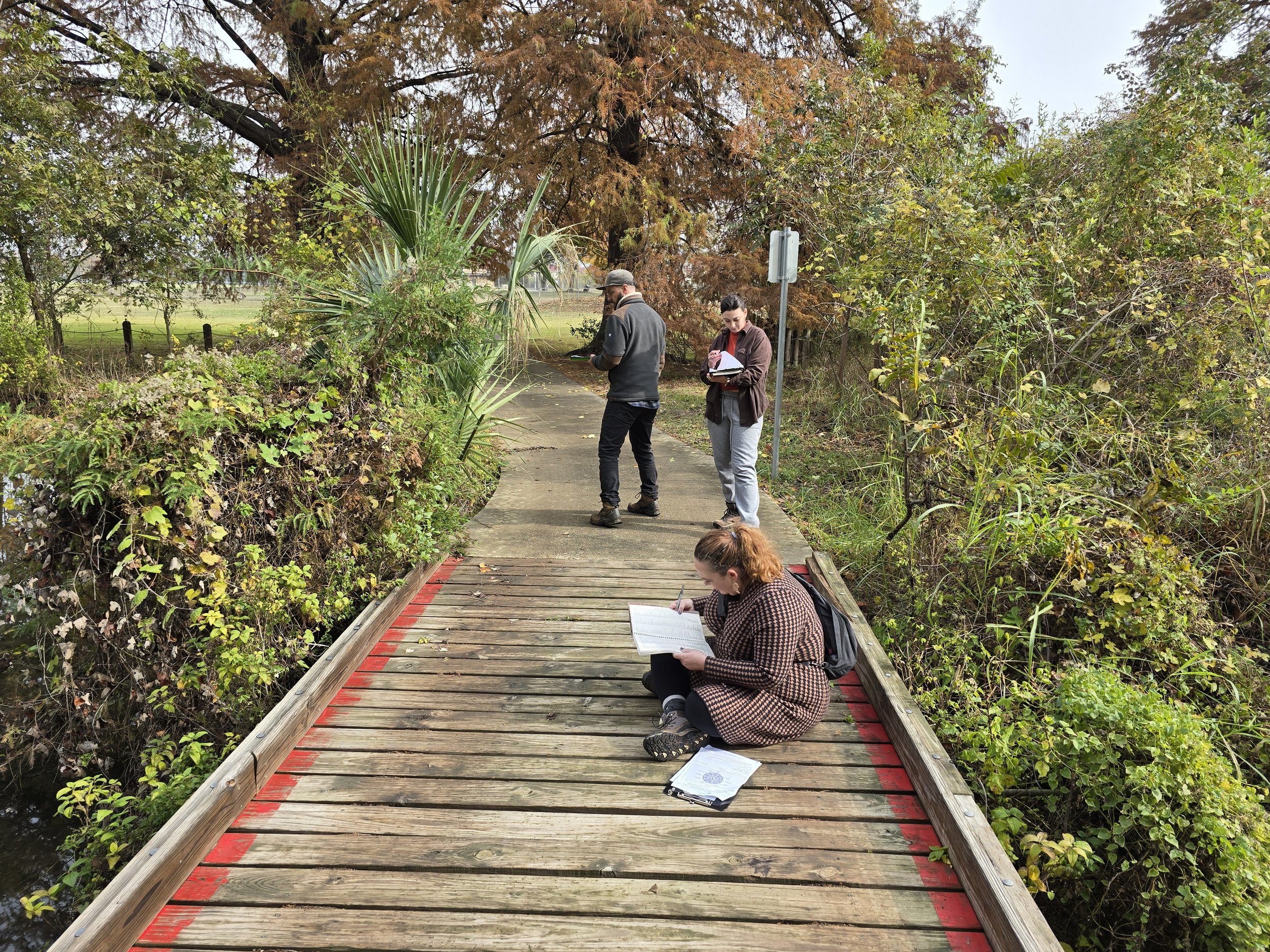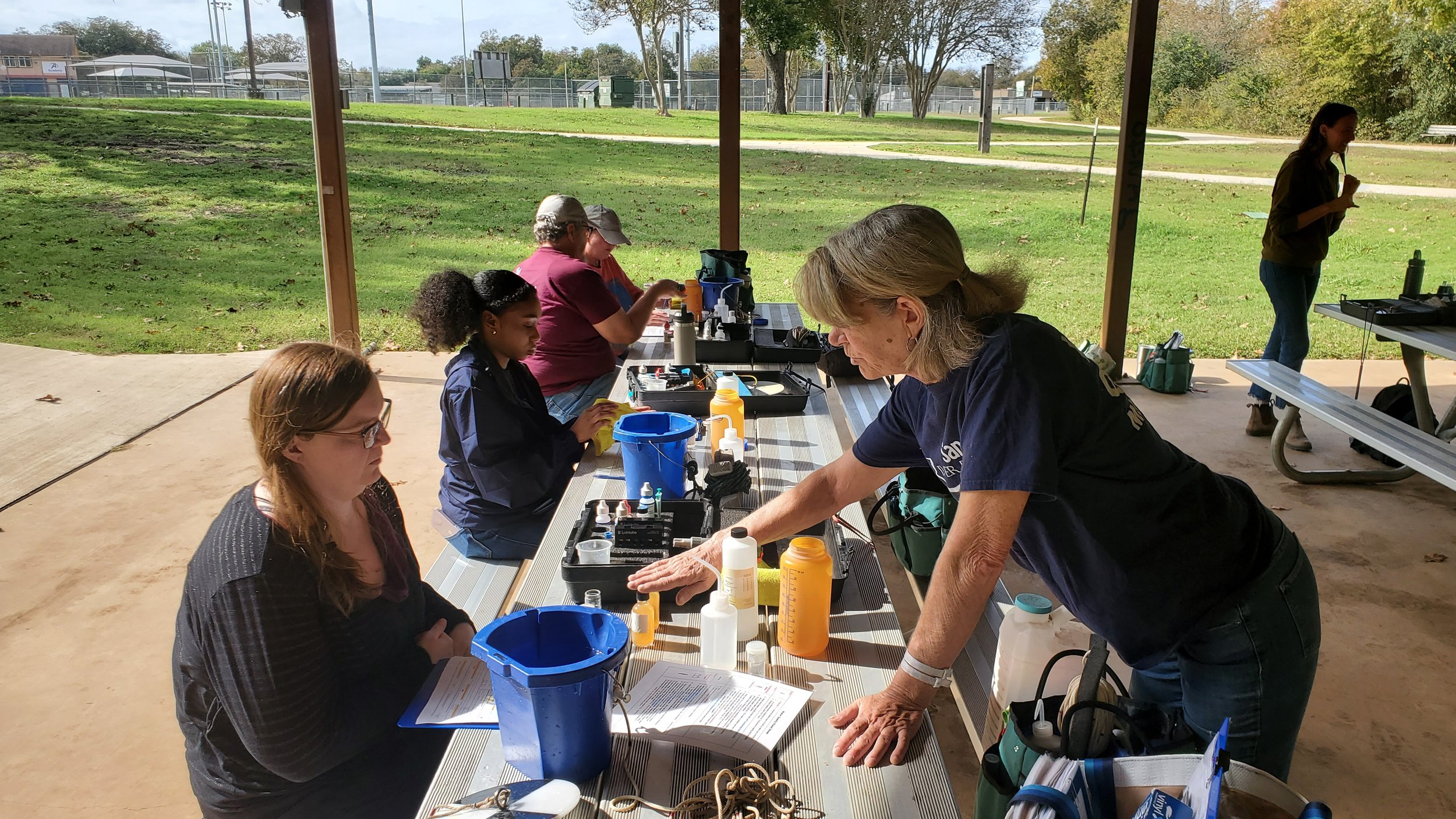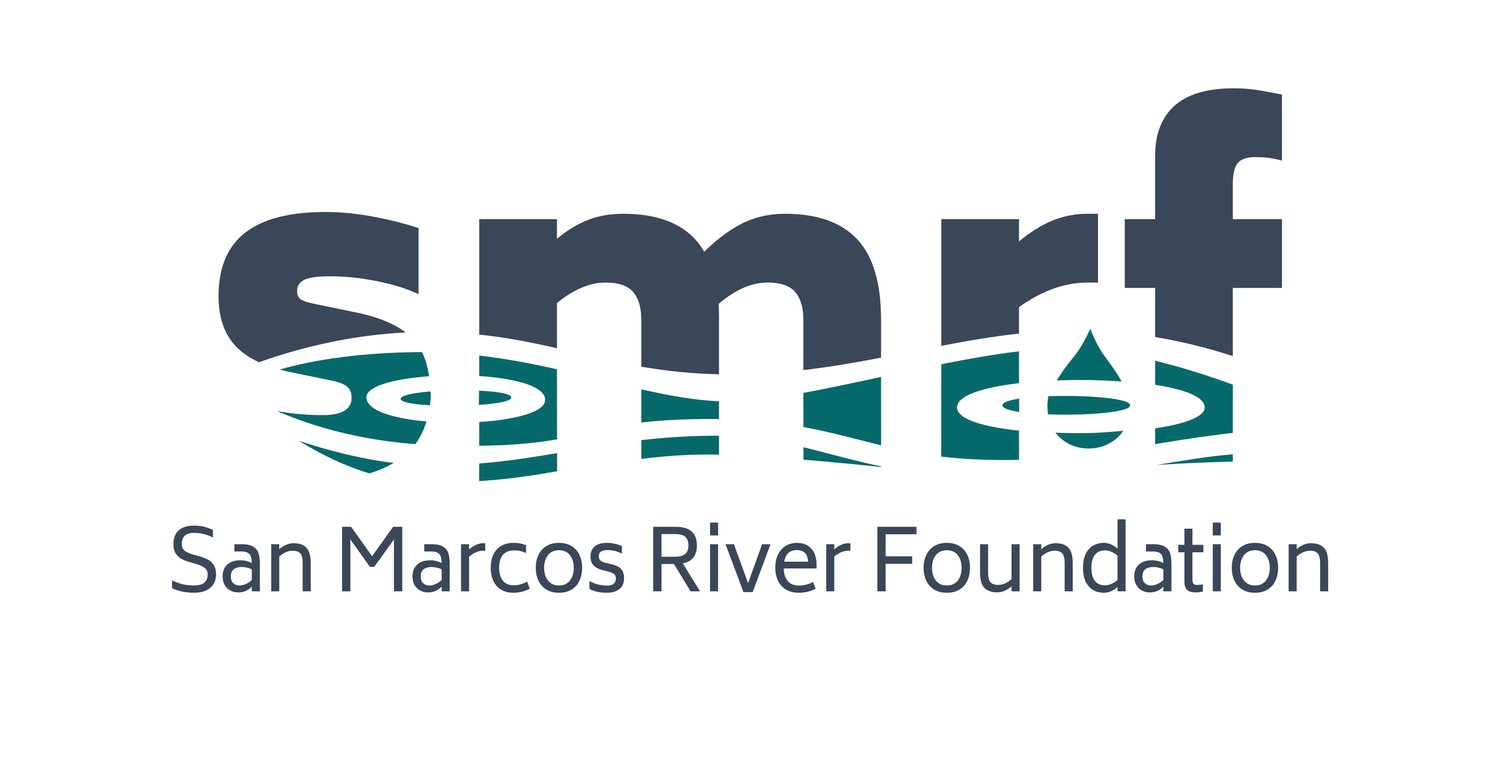
Volunteer
Water Quality Monitoring
The San Marcos River Rangers are Texas Stream Team trained volunteers who act as community scientists to conduct monthly scientific data collection and observations at 30+ sites along the San Marcos and Blanco rivers.
As the oldest and one of the largest monitoring groups in the State of Texas, the River Rangers have collected and tested water quality samples along the San Marcos and Blanco rivers for 28+ years, monitoring the health of the river while alerting city and county officials to potential problems. Over 50 monitors go out monthly to collect samples and further our understanding of the river’s cycles.
SMRF works with numerous groups and has provided local teachers with training and support to start their own water quality testing programs for middle and high school students. The River Rangers train hundreds of monitors every year from across the state to become state-certified water quality monitors, accounting for more than a third of all monitors in the state since our inception and almost two-thirds of all new monitors trained within 2022.
We offer free, monthly Texas Stream Team training sessions for all folks who would like to become certified in the different curriculum options. These training sessions are first-come-first-served, and to participate, you must secure an RSVP prior to the date of the training; minimum age of 14 years old is required, and no prior experience is necessary. All materials are provided free of cost.
For more information about becoming a River Ranger and joining a training, contact:
Adam Berglund, Trainer and Coordinator / RiverRangers@SanMarcosRiver.org
We will send out RSVP Confirmation emails about once per week.
Request to Sign-Up Below
How do I get involved?
-
Step 1: Secure an RSVP for a training session.
Step 2: Attend the training session.
Step 3: Complete all the training Phases to a satisfactory level of skill.
Step 4: Receive a monitoring-level certificate from Texas Stream Team.
-
Indicate your interest in volunteering with us in our local program. We will reach out to you after your training with us to get you available sites & time slots. Then, get on our roster by registering a site & time slot with our River Ranger Coordinator
Then, we will provide you with an information sheet regarding:
Monitoring dates for your time slot throughout the year
Explanation & description of your assigned site
Cache locations for our shared monitoring supplies
Expectations & policies of you with our program, etc.
We will go out with you for the first time to introduce you to your site & make sure you understand everything required of you.
*If you did not train with us, then please reach out and have your Texas Stream Team certificate available for reference.
-
Become more involved by gaining monitoring experience in the field & gaining additional certifications in other monitoring curriculums.
-
We conduct Field Audit sessions of your performance every two years, or as you request, so that you can make sure that you are performing correctly & staying up to date with new procedures.
2025 Training Schedule:
Standard Core
2026 Spring/Summer/Fall/Winter event schedule coming later!
Riparian Evaluation
2026 Spring/Summer/Fall/Winter event schedule coming later!
E. coli Bacteria (pre-reqs required)
2026 Spring/Summer/Fall/Winter event schedule coming later!
Advanced (pre-reqs required)
2026 Spring/Summer/Fall/Winter event schedule coming later!
Optical Brightener a.k.a. Tampling (pre-reqs required)
Jun. 15, 2025 (SUN) 10AM-2PM - Optical Brightener - San Marcos, TX
Dec. 14, 2025 (SUN) 10AM-2PM - Optical Brightener - San Marcos, TX
2026 Spring/Summer/Fall/Winter event schedule coming later!
Texas Stream Team Curriculum
-
Standard Core monitoring involves performing tests for parameters such as conductivity, dissolved oxygen, pH, total depth, water and air temperature, and water transparency using a chemical Standard Core kit. In addition to these parameters, Standard Core citizen scientists also conduct various field observations.
-
Biomonitors assess the health of your lake, river, stream, or estuary based on the riparian habitat. Data is coupled with water quality data and used to track ecosystem and habitat health over time in the rivers and streams that flow to the Texas Coast.
A riparian area is the interface between land and a water body. When a riparian area is healthy and functioning properly, it filters and slows run-off and floodwaters and allows for sediment trapping, water storage, and groundwater infiltration. The water quality benefits of a healthy riparian area are well documented.
It is important to collect data on riparian areas because the indicators of riparian function can lead to the identification of activities that may be hindering the natural riparian recovery process.
-
E. coli bacteria monitoring involves performing tests for E. coli, which can be performed at the same sampling time and location as your monthly Core monitoring. E.coli bacteria is measured to determine the relative risk of swimming (contact recreation) in a water body. E. coli is a bacteria that originates from the wastes of warm-blooded animals, and the presence of this bacteria indicates that associated pathogens from waste may be reaching a body of water. Sources of E. coli include inadequately treated sewage, improperly managed animal waste from livestock, pets, aquatic birds, and mammals, or failing septic systems.
Prerequisites are required before participating in this course:
Standard Core Monitoring certification
6+ months of field experience in Standard Core Monitoring
-
Advanced monitoring involves performing tests for nitrate-nitrogen, orthophosphate, turbidity, and streamflow using the Advanced kit which can be performed at the same sampling time and location as your monthly Core monitoring.
Prerequisites are required before participating in this course:
Standard Core Monitoring certification
6+ months of field experience in Standard Core monitoring
-
Optical Brightener, also known as Tampling, monitoring involves performing tests for the presence of optical brighteners in water using basic over-the-counter products and ultraviolet light. This can help with the early detection of E. coli Bacteria from leaky septic systems and/or untreated grey-water discharge identifying the presence of optical brighteners which are commonly found in detergents and used as a “whitening” agent.
Anyone may take this course in order to begin contributing data to the OB Tampling Citizen Science Hub.
Prerequisites are required before participating in this course for certification by Texas Stream Team:
Standard Core & E. coli Bacteria Monitoring certification
6+ months of field experience in Standard Core Monitoring
-
A Texas Stream Team citizen scientist trainer is a certified monitor who has completed the training necessary to lead Texas Stream Team citizen scientist training sessions. Citizen scientists can become certified trainers for the Standard Core, Probe Core, E.coli, Advanced, Macroinvertebrate Bioassessment, and Riparian Evaluation trainings.
A Texas Stream Team trainer is encouraged to participate in and/or lead at least two citizen scientist training sessions per year and provide information on these training sessions to Texas Stream Team in the form of completed citizen scientist training packets. Becoming certified as a Texas Stream Team trainer not only increases the scope of your involvement, but also helps Texas Stream Team to provide your community with the resources to become more engaged in water quality and environmental stewardship.
The San Marcos River Rangers have helped in the training of many Texas Stream Team trainings across the state!
Becoming Certified as a Texas Stream Team Trainer
The Texas Stream Team Trainer-In-Training curriculum is a four-phase process that introduces Trainers-In-Training to Texas Stream Team training procedures and processes alongside a certified supervising trainer. This begins by instructing Trainers-In-Training on how to effectively communicate key water resource concepts and information about Texas Stream Team and Texas Stream Team partners to training participants. Trainers-In-Training also practice explaining and demonstrating the collection of data, ensuring adherence to data quality objectives, conducting field observations, and other essential monitoring skills. At the end of a training session, Trainers-In-Training practice collecting training packets, monitoring forms, Measures of Success surveys, and other necessary paperwork. Trainers-In-Training learn and practice these skills alongside a certified Texas Stream Team supervising trainer.
Phase 1: Receive Monitoring Level Certification and actively monitor in the field for 6+ months with that curriculum,
Phase 2: Trainee assists a certified trainer for the duration of a training session,
Phase 3: Trainee leads the complete duration of a training session while supervised by a certified trainer,
Phase 4: Once able to prove competence & capability, then the certified trainer will submit a trainee for certification as a new trainer; previous phases may be repeated in order to build competence if required by the supervising trainer.

